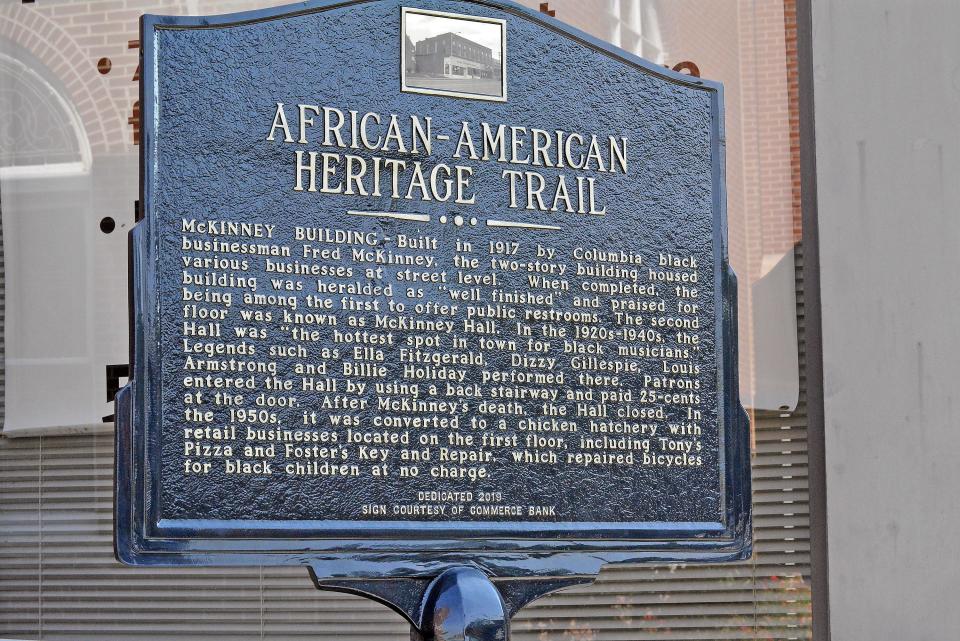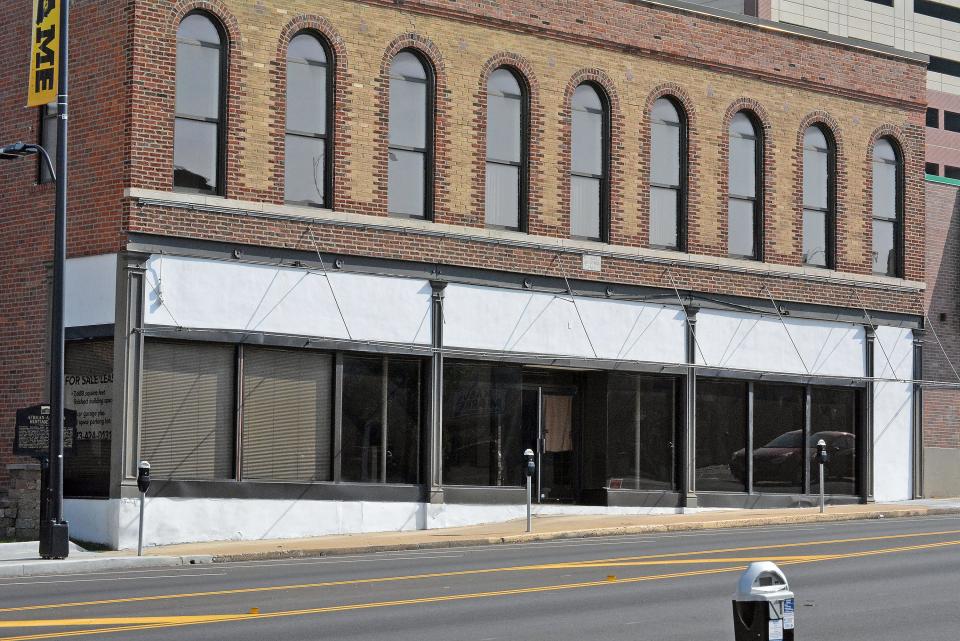McKinney Building preservation a 'legacy opportunity' for Columbia, task force leader says
- Oops!Something went wrong.Please try again later.
The Rev. Clyde Ruffin, as chair of the JW "Blind" Boone Heritage Foundation Board, pastor of Second Missionary Baptist Church and former Columbia City Council member is keenly familiar with historic preservation and revitalization.
It is a task he again is undertaking as chair of the McKinney Building task force, which will meet for the first time 3:30 p.m. Feb. 23 at Second Missionary Baptist, 407 E. Broadway. The task force will tour the McKinney building at the meeting's conclusion.
"The 20 years of work on the (JW "Blind" Boone Home) project not only gave me a sense of the historical significance of the Blind Boone home, as well as the church and of the McKinney Building, it also gave me some insight in how to engage the community in the process," Ruffin said.
All three structures neighbor each other in the area of North Fourth Street and Broadway downtown.

Members of the task force represent Columbia NAACP; Second Missionary Baptist Church; the city's Historic Preservation Committee; Boone County Historical Society; University of Missouri School of Music Jazz Studies; MU Black Studies; the J.W. "Blind" Boone Heritage Foundation; Michael A. Middleton Center for Race Citizenship and Justice; Grade A Plus; the Sharp End Heritage Committee; Downtown Community Improvement District; and local property owners and Columbia residents.
The task force, once its work is finished will provide a report to the Columbia City Council on how to preserve the building's ties to Jazz Age and local Black history and how to redevelop the space.
"This is a legacy opportunity insofar that it is an opportunity to honor the history of the building and accomplishments of (Frank) McKinney, but it also is an opportunity to write history. However we choose to redesign the use and function of the building will serve, hopefully, for generations to come. It is an important opportunity all contained in that one location," Ruffin said.
The first meeting will give Ruffin a chance to meet with members and hear from them.
"Primarily, the purpose of the task force is to become the face of the city within the community. We have to engage the city on the decision-making process, because we want to make sure that whatever is done with the building, it meets the needs of the community," he said. "We will be a liaison between the community and the city in terms of what happens with the building moving forward."
Ruffin expects there will be at least two public input meetings in which community members can give feedback to the task force on the building's future use.
"I am confident that what will be shared will reflect the restoration or renovation of the building, but it will also help determine who has access, what kind of activities they would like to see on an ongoing basis in the building. So, it is access and function, for sure and not just design," he said.
While it is too early to put in a timeline on when the task force will submit its final report to the city council, Ruffin still hopes its work is expeditious.
"The need for this type of space within the community is immediate. It took 20 years to restore the Blind Boone Home and some of the very strategic and important people who started that process, did not live to see it complete. So, we would like to move this as quickly as possible," he said, noting he hopes that artist renderings of possible interior uses could be made as early as June.
"Just a visionary illustration of the interior spaces of the building," he said. "I am hoping we will have something visual for the public to see by then."
Much of McKinney Building history Ruffin already knew, since when the structure went up for sale, Second Missionary Baptist had an interest in purchasing the building. Because of the church's location, it cannot really expand its footprint. The McKinney Building could have served as a church expansion.
"That didn't work out, but in the process we held visioning meetings and did research on the history of the building, so I certainly have a good deal of knowledge on the history of the building. The one thing I find surprising is at one time there was a (poultry) hatchery on the second floor," he said.
McKinney Building once site of retail shops, dance hall
Frank McKinney, a Black bricklayer, businessman and real estate developer, started purchasing properties in central Columbia in the 1880s, buying his first downtown lot at the age of 30 in 1886, according to a letter to the City of Columbia written by Chris Campbell, executive director of the Boone County Historical Society.
Thirty years later, in 1916, McKinney would purchase lots at 411 E. Broadway. Construction started on what would be known as the McKinney Building in August 1917. The building was completed in early 1918, costing about $5,000 to construct at the time.

The two-story building with a rear parking lot had three retail stores on the ground floor and a dance hall on the second when it first opened. Count Basie performed at the McKinney Building when he still was with Bennie Moten and his Band as its pianist, playing there in 1932 and 1935.
Basie took over the band after Moten's death in 1935, rechristening it the Count Basie Orchestra, Campbell wrote.
The second floor space also often was used by organizations for dinners, fundraisers, religious or political events, speaking engagements and other educational meetings and events.
More: This downtown Columbia building is part of jazz age history. The city just bought it
Any jazz performances in the McKinney Building were unlikely past 1938. After McKinney's death in 1934, it was sold to W.G. Tallen of Randolph County. The first floor was converted for use by Tallen Candy Co. and the second level dance floor was pulled up for conversion into the W.B. Smith Hatchery for turkeys, geese, ducks and chickens, which also had once occupied space on the ground floor, Campbell wrote.
The structure still has business space on the ground floor but the second floor now is home to a three-bedroom and a studio apartment.
"Frank McKinney, and by the building's special and very prominent role in the social, educational, religious and civic life of Columbia's Black population for decades, this property is significantly historic," Campbell wrote. "Many important events and gatherings have taken place there and it is absolutely worth preserving for those reasons."
More: Here's who will lead task force to redevelop Columbia's historic McKinney Building
NOTE: portions of this article previously were published.
Charles Dunlap covers local government, community stories and other general subjects for the Tribune. You can reach him at cdunlap@columbiatribune.com or @CD_CDT on Twitter. Subscribe to support vital local journalism.
This article originally appeared on Columbia Daily Tribune: Columbia's McKinney Building Task Force plans first meeting Feb. 23

